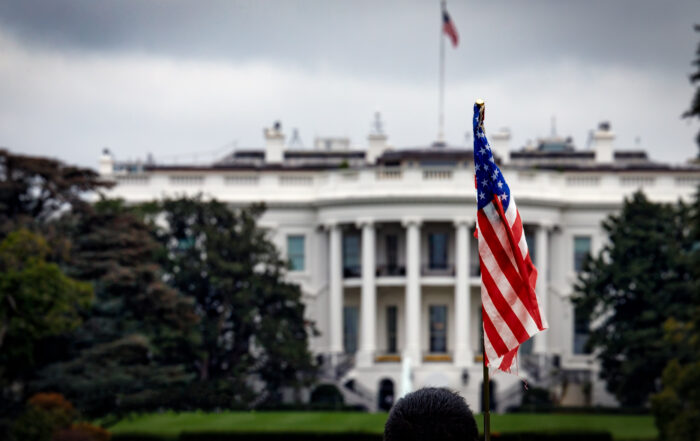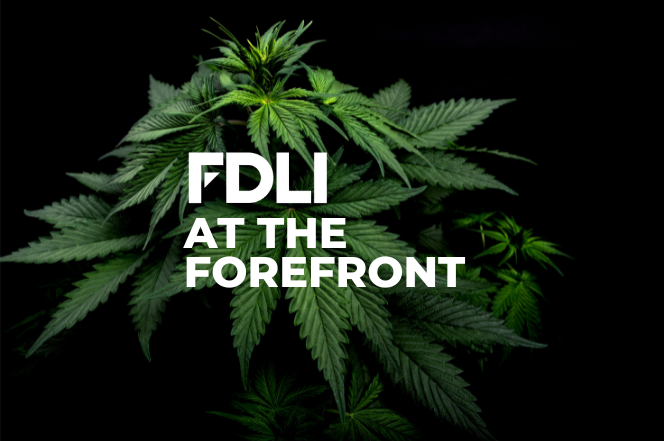
FDA Holds Public Hearing on Strategies to Address Youth E-Cigarette Use
By Samuel Jockel, Keller and Heckman LLP
Edited by T. Daniel Logan, Kleinfeld, Kaplan & Becker LLP
Introduction
On January 18, 2019, the U.S. Food and Drug Administration (FDA or agency) held a public hearing to gather information regarding the potential role drug therapies could play in eliminating youth electronic cigarette (e-cigarette) use.1 The public hearing is part of the agency’s increasing focus on addressing what it calls a “growing epidemic” of youth e-cigarette use. In his statement announcing the hearing, FDA Commissioner Dr. Scott Gottlieb cited the “deeply troubling” nature of this public health problem, noting that parents and teens have reached out to the agency seeking help in stopping youth addiction to e-cigarettes.2
Background
2018 was a watershed year for FDA enforcement efforts to prevent youth use of e-cigarettes. As part of its Youth Tobacco Prevention Plan,3 FDA issued warning letters and civil penalties to retailers for the illegal sale of e-cigarettes to minors4 and warning letters to manufacturers and retailers for marketing e-liquids in packaging found to be imitating popular kid-appealing foods and beverages.5 The agency also called on five of the top-selling pod-based e-cigarette brands to take voluntary actions to prevent youth access to their products; some put forward plans on efforts to curb youth use of these products.6
Most recently, in November 2018, Commissioner Gottlieb announced FDA’s intention to re-examine policies permitting flavored e-cigarettes to remain on the market, but did not call for a ban on all flavored e-cigarette products at that time.7 Rather, FDA announced its intent to “revisit” its compliance policy, which permits e-cigarettes on the market on August 8, 2016 to remain on the market until August 8, 2022 without premarket authorization8—with respect to flavored e-cigarettes (excluding tobacco, mint, and menthol flavors) in order to restrict where such products may be purchased. More specifically, it indicated that the potential revised policy would allow flavored e-cigarette products to remain on the market only if they are sold: (1) in retailers that permit entry only to adults (18+), or that have a walled-off adult-only section where flavored products can be viewed and purchased; and (2) in online stores that implement soon-to-be-announced “heightened” age-verification measures.9 With regard to mint and menthol flavors, the Commissioner stated he would revisit this aspect of the current compliance policy if evidence shows that youth use of mint or menthol e-cigarettes has not abated.
Against this backdrop of prevention efforts, Commissioner Gottlieb explained that “the rapid growth in popularity of e-cigarettes among youth . . . necessitates that we explore all options,” including “potential drug therapies to support youth e-cigarette cessation.”10
FDA’s Hearing Notice and Request for Comment
In the November 5, 2018 Federal Register notice announcing the meeting, FDA requested that commenters consider six questions when preparing responses and presentations, but noted that it welcomed any feedback relating to the topic.11 The questions posed concerned: (1) identifying the divergent factors driving youth, as opposed to adult, use of e-cigarettes; (2) characterizing a subset of youth that would be more likely to benefit from drug therapies for cessation; (3) describing the potential scientific, clinical, and societal factors that could impede cessation clinical trials in youth; (4) delineating potential methods and study designs for clinical trials; (5) procuring adult cessation data that could be leveraged to develop drug therapies for youth cessation; and (6) pinpointing potential drug therapies to support cessation in traditional combustible products and smokeless products. FDA will accept submission of written comments to the docket through February 1, 2019.12
Presentations and Comments
Commissioner Gottlieb opened the public hearing with remarks on the role the agency has played in curbing youth e-cigarette use and the need to understand how drug therapies may be able to support youth cessation.13 His introduction was followed by a diverse range of presenters, including medical researchers, representatives from vapor organizations, and public health advocates, among others, who each gave ten-minute presentations. Additionally, during an open public hearing portion, individuals offered informal presentations lasting approximately three to five minutes. After each presentation, a panel of representatives, comprised of FDA staff from the Center for Drug Evaluation and Research (CDER), the Center for Tobacco Products (CTP), the Office of Chief Counsel, and the Office of Commissioner were given the opportunity to pose questions.
Although FDA may have been seeking comment and data regarding the potential for drug therapies to assist in youth e-cigarette cessation efforts, advocates for the vapor industry and public health organizations primarily used the forum to present evidence in support of their own viewpoints on e-cigarettes more generally. Much of the hearing was spent discussing the sufficiency of FDA’s youth prevention strategies and disputing whether a rise in e-cigarette use amounts to an “epidemic.” Despite a general consensus that youth and adolescents should not vape, there was very little nuanced dialogue about what role, if any, drug therapies should play in cessation strategies for youth users of e-cigarettes.
- Framing the Issue: the “Epidemic” of Youth E-Cigarette Use
In his remarks, Commissioner Gottlieb once again characterized the prevalence of e-cigarette use among youth as an epidemic, relying on the 2018 National Youth Tobacco Survey (NYTS) data, which, although not yet fully released, shows a sharp spike in the number of adolescents that have used an e-cigarette at least once in the last 30 days from 2017 and 2018.14 He also underscored that the most recent data indicated an increase in not just experimentation, but regular e-cigarette use. In the Commissioner’s view, if e-cigarette usage among youth continues to rise, the entire vapor industry will, in his words, face an “existential threat,” and the debate will shift to whether such products should be permitted to be marketed at all without premarket review. Despite those concerns, research specifically focusing on youth tobacco-product cessation is limited, and the Commissioner encouraged the examination of the potential role drug therapies may play in helping young people who may be addicted to these products.
Although some parties, such as the American Lung Association, agreed with the Commissioner’s characterization, several presenters, including those from the New York State Vapor Association (NYSVA) and Smokefree Pennsylvania, took issue with the Commissioner’s continued references to the problem of youth e-cigarette use as an “epidemic.” For instance, Spike Babaian of the NYSVA noted that without long-term data, the negative consequences of e-cigarette use among children and teens have yet to be seen. She also pushed back on the agency’s reliance on the NYTS data, which, she alleged, seemingly swept in marijuana use when determining total use of electronic nicotine delivery systems (ENDS). Likewise, William Godshall of Smokefree Pennsylvania asserted that FDA’s characterization was overblown, claiming that “many/most” youth who vape are not doing so with nicotine. Shifting the focus onto youth use of combustible tobacco, Mark Anton, Executive Director of the Smoke-Free Alternatives Trade Association (SFATA) declared that the “true epidemic is [combustible] smoking-related diseases,” and both Babaian and Godshall emphasized that youth cigarette smoking rates are at an all-time low.
- Preventing Access: Presenters Offer Suggestions on Additional Actions FDA Could Take
In spite of FDA’s efforts to focus the hearing on youth e-cigarette cessation strategies, presenters centered discussion on how to prevent youth from initiating e-cigarette use in the first place.
Despite FDA’s actions, including the recent focus on flavors, several presenters pressed the agency to do more. Specifically, Dr. Bonnie Halpern-Felsher of Stanford University encouraged the agency to prohibit all flavored e-cigarettes, arguing that youth are unlikely to use e-cigarettes without flavors and that adults do not need flavors for cessation. Similarly, Lauren Lempert, University of California, San Francisco, Center for Tobacco Control Research and Education, advocated for completely restricting internet sales altogether. Citing the agency’s own statements concerning the reduced-harm potential of e-cigarettes, Ms. Lempert and Dr. Halpern-Felsher asserted that such relative risk statements mislead youth into thinking that e-cigarettes are harmless and asked the agency to prohibit e-cigarette companies from making any express or implied claims that their products are safer than combustible tobacco or may help people stop smoking. Dr. Halpern-Felsher also noted that kids do not understand the concept of addiction included in the current nicotine warning statement or the nicotine content disclosures currently provided on e-cigarette labels and requested that FDA require labeling statements that are more understandable to youth.
- Reduction of Use and Treatment of Addiction
In his opening remarks, Commissioner Gottlieb noted that very little research has been done on youth tobacco-product cessation and how drug interventions can address this problem for youth. Currently, FDA has approved numerous nicotine replacement therapy (NRT) products, as well as other prescription drugs, for smoking cessation.15 However, as noted by Dr. Halpern-Felsher, there are no safety and efficacy data for these products in the youth population. Additionally, as Mr. Godshall argued, some of these products, such as Chantix and Zyban, may pose a greater health risk than nicotine itself.
Dr. Susanne Tanski, from the American Academy of Pediatrics, noted the near absence of data concerning treatment methodologies for adolescents with e-cigarette dependence and therefore proposed randomized control clinical trials for NRTs in youth populations, as well as validated methods to assess nicotine dependence. Presenters discussed the areas in which research is needed, such as the efficacy of currently approved NRT for treatment of adolescents dependent on e-cigarettes, the level of dependence among youth using e-cigarettes, the different sociological and cultural factors driving e-cigarette use among youth, and the reasons why youth might seek treatment.
Beyond the pharmacological approach, presenters from various organizations offered other psychological and socio-cultural strategies for taking a multi-pronged approach to tackling addiction. Those strategies included social support, breathing techniques, technology and social media-centered approaches, and other non-pharmaceutical modalities. FDA panel members asked presenters about any data regarding youth cessation in particular and encouraged submission of any relevant information. However, on the whole, the strategies raised focused on tobacco cessation efforts in general.
Next Steps and the Preservation of Harm Reduction Options for the Adult Population
Although the intended topic of the meeting was the role for drug therapies as a cessation tool for youth e-cigarette use, the bulk of the discourse dealt with prevention and the FDA’s efforts in that regard. At this juncture, it remains to be seen how FDA will ultimately revise its compliance policy or whether it will adopt any of the more draconian proposals suggested at the hearing, including a restriction on all flavors and online sales. Funding clinical trials for pharmacological cessation products in youth and investigating further into drug and non-drug therapy tools for addiction in youth are also on the table.
Somewhat lost in the discussion of solutions to the youth “epidemic” was Commissioner Gottlieb’s acknowledgement that e-cigarettes and other electronic nicotine delivery systems may present a less harmful alternative for adult smokers of combustible cigarettes. The Centers for Disease Control and Prevention recently concluded that ENDS are among the most used tool for quitting smoking,16 and FDA has shown an interest in studying whether e-cigarettes actually promote smoking cessation.17 After the public hearing, Commissioner Gottlieb tweeted, “I believe if every currently addicted adult smoker switched completely to e-cigs it would provide tremendous public health gain. But that opportunity is in significant risk if kids use continues to rise. There’s an opportunity now for responsible parties to address youth use.”18 Whether FDA can address the problem of youth use of e-cigarettes while preserving a pathway for adult smokers to transition to e-cigarettes will likely be seen in the direction the agency takes in the coming months.
About the author: Samuel Jockel is an associate in the Washington, D.C. office of Keller and Heckman LLP and a former USDA attorney and FDA fellow.
About the editor: T. Daniel Logan is an associate with the law firm of Kleinfeld Kaplan & Becker LLP. He advises food, cosmetic, drug, dietary supplement, and tobacco companies on FDA regulatory matters. Previously, Dan worked as an Associate Chief Counsel in FDA’s Office of Chief Counsel.
- Eliminating Youth Electronic Cigarette Use: The Role for Drug Therapies Public Hearing, FDA.gov (Jan. 20, 2019).
- Statement from FDA Commissioner Scott Gottlieb, M.D., on the agency’s continued efforts to address growing epidemic of youth e-cigarette use, including potential new therapies to support cessation, FDA.gov (Nov. 2, 2018).
- FDA’s Youth Tobacco Prevention Program, FDA.gov (last updated Jan. 16, 2019); see also JUUL in Schools: Can FDA Close the Youth On-Ramp While Still Maintaining the Off-Ramp for Adult Smokers?, FDLI.org (last accessed Jan. 23, 2019).
- FDA takes new steps to address epidemic of youth e-cigarette use, including a historic action against more than 1,300 retailers and 5 major manufacturers for their roles perpetuating youth access, FDA.gov (Sep. 12, 2018).
- FDA warns more companies to stop misleading kids with e-liquids that resemble kid-friendly foods as part of Youth Tobacco Prevention Plan, FDA.gov (May 10, 2018); Companies cease sales of e-liquids with labeling or advertising that resembled kid-friendly foods following FDA, FTC warnings, FDA.gov (Aug. 23, 2018).
- Statement from FDA Commissioner Scott Gottlieb, M.D., on new steps to address epidemic of youth e-cigarette use, FDA.gov (Sep. 12, 2018).
- Statement from FDA Commissioner Scott Gottlieb, M.D., on proposed new steps to protect youth by preventing access to flavored tobacco products and banning menthol in cigarettes, FDA.gov (Nov. 15, 2018).
- Extension of Certain Tobacco Product Compliance Deadlines Related to the Final Deeming Rule (Revised) – Guidance for Industry, FDA.gov (Nov. 2018).
- Statement of FDA Commissioner, supra note 7.
- Statement of FDA Commissioner, supra note 2.
- 83 Fed. Reg. 55,318, 55,320 (Nov. 5, 2018).
- 83 Fed. Reg. 64,752 (Dec. 18, 2018).
- Remarks by Scott Gottlieb, M.D.: Public Hearing on Eliminating Youth Use of Electronic Cigarette and Other Tobacco Product Use: The Role for Drug Therapies, FDA.gov (Jan. 18, 2019).
- 2018 NYTS Data: A Startling Rise in Youth E-cigarette Use, FDA.gov (Jan. 20, 2019); see also We cannot let e-cigarettes become an on-ramp for teenage addiction, WashingtonPost.com (Oct. 11, 2018) (citing preliminary data from the NYTS reporting use of e-cigarettes for high-school age children rose more than 75% from 2017 to 2018).
- 82 Fed. Reg. 56,759 (Nov. 30, 2017).
- Brad Rodu, CDC: E-cigarettes more popular than FDA-approved quitting aids, RSTREET.org (Apr. 19, 2017).
- Angelica LaVito, FDA may consider over-the-counter regulation for e-cigarettes, CNBC.com (Mar. 28, 2018, 4:06 PM) (noting Commissioner Gottlieb’s statement that FDA is “looking very actively” at whether the agency could bring e-cigarettes into the OTC drug regulatory pathway, which “would give us many more tools to look at both safety and benefit, and study whether or not an e-cigarette actually does promote smoking cessation and also give us many more tools to actually study the toxicology associated with it and see what effects it might have on the lung”).
- See https://twitter.com/SGottliebFDA/status/1086678066523529216.
Webinars
The First Two Months: Understanding FDA, DOJ, and FTC in the New Administration
Recorded March 19, 2025 | On-Demand Webinar
Moving Forward: How to Transition to Private Sector Careers in Food and Drug Law and Regulation
Recorded March 6, 2025 | On-Demand Webinar
High Time for a Change: Implications of DEA’s Proposed Marijuana Rescheduling
Recorded June 12, 2024 | On-Demand Webinar
Programs
Enforcement, Litigation, and Compliance Conference: For the Drug, Device, Food, and Tobacco Industries
December 4–5, 2025 | In-Person & Virtual Event
Register by 7/31/25 and SAVE





